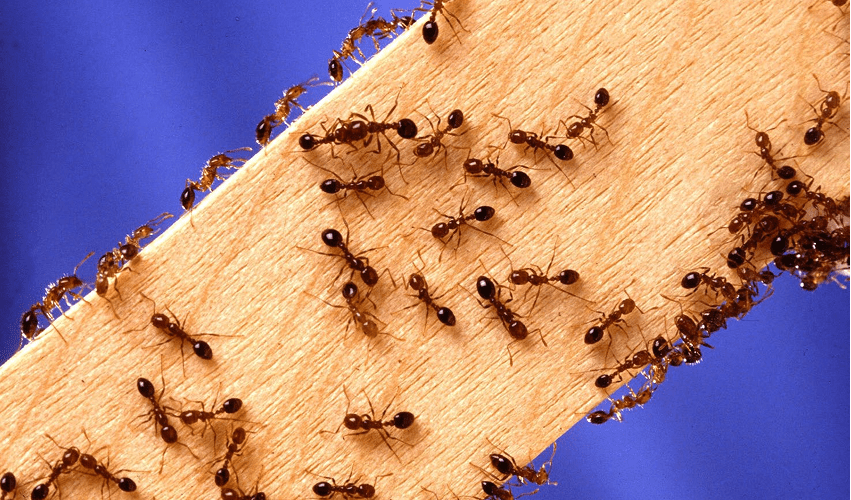
Fire ants have the potential to cause billions of dollars worth of damage to the Australian economy. Photo WA DPIRD
THE NEW South Wales Government has confirmed another fire ant incursion in the state with infested turf intercepted at Clunes, near Byron Bay, on last Wednesday.
The incident has prompted the government to place a temporary suspension of turf movements from heavily infested fire ant areas of south-east Queensland.
A new Biosecurity Emergency Order (No. 15) was published on Friday to include the immediate temporary suspension on turf.
The move is designed to mitigate the risk of fire ant movements into NSW.
Qld residents who handle materials like soil, hay, turf and potted plants, sourced from within the Qld-defined fire ant biosecurity zones are legally required to follow measures to reduce the risk of spreading fire ants, as outlined in the Biosecurity Regulation 2016 (QLD) as well as any other requirements of the receiving state or territory.
Minister for Agriculture Tara Moriarty said the step was necessary to “mitigate the movement of these highly invasive pests”.
“We’ve proven that when fire ants are detected in NSW, we will respond quickly to stamp them out as soon as possible, and it’s thanks to the thousands of sets of eyes that report in suspected sightings,” Ms Moriarty said.
“Biosecurity is everyone’s responsibility, so it’s critical that businesses moving these types of materials comply with the Biosecurity (Fire Ant) Emergency Order.”
Fire ants have been sighted at two other locations in NSW this year, with landscapers reporting a nest at a South Murwillumbah development site in May, and odour-detection dogs located foraging ants at a Wardell temporary-housing complex.
Ms Moriarty said the NSW Fire Ant Program has recently stepped-up efforts to prevent the spread of fire ants with the launch of proactive early detection surveillance across northern NSW.
“Fire ants won’t march into NSW; they will either be carried with materials such as soil, mulch, hay and turf, or fly in by natural spread from Qld, which is why we’re ramping up surveillance in these high-risk areas.”
The initiative uses specially trained detection dogs and human-surveillance teams to monitor high-risk sites to detect and prevent the establishment of fire ants in NSW.
Surveillance will target high-risk locations identified through tracing of fire ant carrier materials, such as turf, soil, and other landscaping materials, along with areas highlighted by habitat-suitability modeling.
Fire ant nests continue to be found at sites across south-east Qld.
The latest discovery was at D’Aguilar, north-west of Brisbane, on October 31, where two nests were found by City of Moreton Bay Council staff.
The National Fire Ant Eradication Program initiated an emergency response to assess the extent of the infestation and develop a comprehensive eradication treatment plan.
Eradication activities, including intensive treatment and surveillance, extended up to 5km from the detection site to protect the area and ensure no undetected fire ants remain.
The program has announced that its targeted eradication treatment areas for 2024–25 include suburbs in parts of Moreton Bay, Somerset, Lockyer Valley, Southern Downs, Scenic Rim, and the Gold Coast.
It will also deliver eradication responses in parts of northern NSW, Toowoomba, and the Sunshine Coast.
“The National Fire Ant Eradication Program’s mission is to protect human and animal health, our environment, economy and outdoor way of life, and be fire ant-free by 2032,” National Fire Ant Eradication Program executive director Ashley Bacon said.
“A lot of our eradication work is currently centred on the Gold Coast, the Scenic Rim and in northern New South Wales, and will be for several more years.”
Source: NSW Government, National Fire Ant Eradication Program